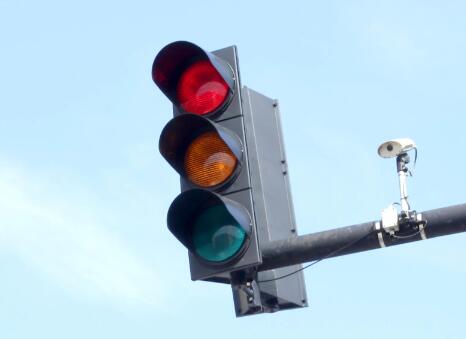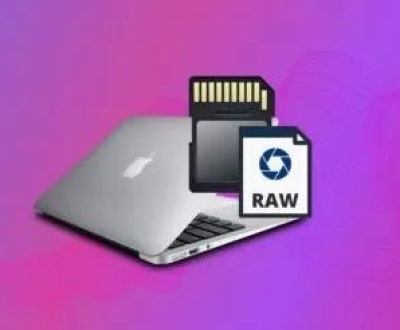Car accidents can be life-altering events, often leading to physical, emotional, and financial consequences. When disputes arise over fault or insurance claims, clear, unbiased evidence becomes invaluable. One of the most crucial forms of evidence in today’s digital world is video footage, especially from traffic cameras. These recordings can help establish who was at fault, prove the timing and nature of the incident, and even assist in legal proceedings.
Traffic Camera Systems
Before diving into the process, it’s essential to understand what kinds of cameras might have captured your accident. These may include:

1. Traffic Monitoring Cameras
Operated by departments of transportation (DOT), these cameras are typically installed on highways, busy intersections, and roadways. Their primary function is traffic management, not surveillance.
2. Red-Light Cameras
These are used to monitor and record vehicles that run red lights. They are usually operated by municipalities or third-party vendors under contract with local governments.
3. Speed Cameras
Used to enforce speed limits, these devices are often located in high-traffic areas or school zones.
4. Surveillance Cameras
Businesses, homes, and public facilities may also have cameras facing roads or intersections. These private cameras can provide useful angles and details not captured by official traffic cameras.
Step-by-Step Guide to Obtaining Footage
Step 1: Act Quickly
Most agencies only retain traffic camera footage for a short time—sometimes as little as 24 to 72 hours. Prompt action is crucial. As soon as the accident occurs and everyone is safe, begin your efforts to identify and contact the appropriate agency or owner of the camera.
Step 2: Identify the Location and Time
Document the precise location (intersection, road name, nearby landmarks) and the exact time and date of the accident. This information is critical when making your request because it helps agencies locate the relevant footage faster.
Step 3: Determine the Responsible Agency
Depending on where the accident occurred, different entities might operate the traffic cameras:
City-owned cameras: Contact your local city’s transportation or public works department.
State-owned highways: Reach out to the state’s Department of Transportation.
Privately owned cameras: Contact businesses or property managers directly.
Law enforcement-controlled cameras: Contact the local police or sheriff’s department.
Visit the agency’s website or call their main line to find out who maintains cameras in the area.
Step 4: Submit a Public Records Request (FOIA Request)
For government-operated cameras, your request will likely fall under your state’s Public Records or Freedom of Information Act (FOIA). Here’s how to make a strong FOIA request:
Format: Most agencies accept written or emailed requests. Some have online portals.
Details: Include:
Date and time of the incident
Exact location (intersection or highway segment)
Purpose of request (e.g., evidence in an accident)
Your name and contact info
Example Template:
pgsql
复制编辑
Subject: FOIA Request for Traffic Camera Footage – [Date, Time, Location] Dear [Agency Name or Records Officer], I am writing to formally request access to any traffic camera footage recorded on [Date] at approximately [Time] from the intersection of [Street A and Street B] in [City, State]. The footage is relevant to a motor vehicle accident that occurred at that location. Please let me know if there are any forms to complete or fees associated with this request. I would appreciate any guidance on how to proceed. Thank you for your time and assistance. Sincerely, [Your Name] [Your Address] [Your Email] [Your Phone Number]
Fees: Some agencies charge a processing or duplication fee. Be prepared to cover minimal costs.
Step 5: Contact Law Enforcement
If the police responded to your accident, they may have requested or secured nearby footage as part of their investigation. Contact the officer assigned to your case or visit the local precinct to inquire about the report and any associated video footage.
In some cases, police may release the footage to you directly or allow your lawyer to obtain it.
Step 6: Reach Out to Local Businesses or Homeowners
If your accident occurred near a store, gas station, or even residential neighborhood, these locations may have security cameras pointing toward the street. Here’s how to approach them:
Act Fast: Most security systems overwrite footage within a few days.
Visit in Person: Politely ask the manager or homeowner if their cameras may have captured your accident.
Explain Your Situation: Let them know the time and place of the incident.
Provide a USB Drive: If they agree to help, having a USB ready can speed up the process.
Offer Gratitude: Always thank them, even if they can’t help.
Step 7: Use Legal Avenues if Necessary
If the agency or property owner refuses to release the footage or claims it’s unavailable, you may need to take legal action. Here’s how:
Hire a Lawyer: An attorney can file subpoenas for evidence in support of a claim or lawsuit.
File a Lawsuit: In serious cases, obtaining video through discovery during litigation may be necessary.
Court Orders: Judges can compel agencies or individuals to produce footage.
Legal Considerations
Privacy Laws
Video from public spaces generally does not violate privacy laws. However, accessing private camera footage or videos that contain private property views can raise privacy concerns.
Chain of Custody
If you plan to use the footage in court, maintaining the integrity of the video is important. Ensure you request a certified or original copy if possible.
Data Retention Policies
Each agency or private business may have different policies for how long they keep footage. Some only retain video for a few days due to storage limitations.
Alternative Sources of Video Evidence
Even if traffic camera footage isn’t available, there are other places to look:
1. Dash Cams
If you or another driver had a dash cam, it might provide crucial video.
2. Witness Videos
Nearby pedestrians or drivers may have recorded the incident with their phones. Post on neighborhood apps or forums (like Nextdoor or local Facebook groups) asking for help.
3. Media Sources
If the accident was newsworthy, local TV stations may have video footage from reporters or traffic helicopters.
4. Insurance Companies
Sometimes insurance investigators obtain footage themselves. Ask your adjuster if they’ve requested any.
Tips to Strengthen Your Case
Document Everything: Record your injuries, damages, witness statements, and police reports.
Stay Organized: Keep track of dates, communications, and agencies contacted.
Follow Up: Don’t assume silence means denial. Politely check in if you don’t receive a response within a reasonable time.
Preserve All Evidence: Make backups of any footage you receive and store it securely.
Real-World Scenarios
To put things in perspective, here are two examples illustrating different outcomes:
Scenario 1: Successful Retrieval
Incident: A rear-end collision at a busy intersection in Los Angeles.
Action Taken: The driver contacted the California DOT and submitted a FOIA request within 48 hours. They also reached out to the nearby gas station manager.
Result: The DOT provided partial footage, while the gas station owner supplied a clear view of the incident. The footage proved the other driver was texting at the time of impact, and the insurance company awarded full compensation.
Scenario 2: Missed Opportunity
Incident: A sideswipe accident on a residential road.
Action Taken: The victim assumed police would handle all evidence collection and didn’t follow up.
Result: By the time the victim tried to retrieve footage from nearby homes, it had already been overwritten. No evidence could conclusively prove fault, resulting in shared liability.
Common Obstacles and How to Overcome Them
“We Don’t Record Footage”
Some traffic cameras are live-view only. Ask if there are other cameras in the area that do record.
“We No Longer Have That Footage”
If you hear this, ask for a written statement verifying the footage was not retained. This can help with insurance claims.
“We Can Only Release Footage to Law Enforcement”
If this happens, work with your lawyer or submit a police report requesting they obtain the footage on your behalf.
“We Need a Subpoena”
This is common with private entities. A lawyer can handle subpoena requests, especially if litigation is underway.
Preventative Measures for the Future
Install a Dash Cam: The most reliable way to ensure you have footage in the future.
Know Your Rights: Familiarize yourself with your state’s public records laws.
Create a “Crash Plan”: Keep a checklist in your car with steps to take after an accident, including how to seek footage.
Obtaining traffic camera footage after a car accident is a process that requires speed, precision, and persistence. Whether you’re dealing with a government agency, a local business, or a homeowner, the key is to act quickly and be thorough in your request. Even if initial efforts don’t yield results, there are alternative avenues including dash cams, witness videos, and legal action that can support your case.
About us and this blog
Panda Assistant is built on the latest data recovery algorithms, ensuring that no file is too damaged, too lost, or too corrupted to be recovered.
Request a free quote
We believe that data recovery shouldn’t be a daunting task. That’s why we’ve designed Panda Assistant to be as easy to use as it is powerful. With a few clicks, you can initiate a scan, preview recoverable files, and restore your data all within a matter of minutes.
Subscribe to our newsletter!
More from our blog
See all postsRecent Posts
- Retrieve photos from sd card 2025-04-25
- Failure when attempting to copy boot files 2025-04-25
- How to get a local copy of all pdm files? 2025-04-25

 Try lt Free
Try lt Free Recovery success rate of up to
Recovery success rate of up to









